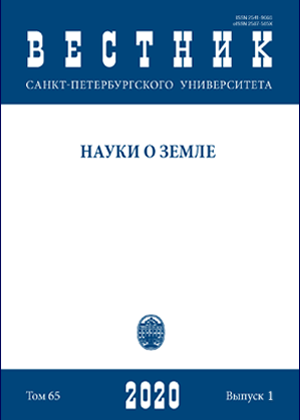The quality of the reproduction of El Nino and La Nina events using different reconstructed sea surface temperature data sets
DOI:
https://doi.org/10.21638/spbu07.2020.106Abstract
In this paper, using various data sets of the reconstructed ocean surface temperature — HadISST, COBE SST2 and ERSSTv5 — the differences are showed in the identification of El Niño and La Niña events with their subsequent separation on the East Pacific (EP) and Central Pacific (CP) types from 1870 to 2018. The SST data of the TOGA-TAO buoys from 1981 to 2018, the Terra satellite (MODIS) from 2001 to 2018 and the NOAA IO SSTv2 from 1982 to 2018 were used for a verification of the quality of SST reconstructions in the equatorial Pacific. The obtained results in this work demonstrate differences in the number of EP and CP types of El Niño and La Niña for the early period from 1870 to 1900, when the data were less reliable, and for the entire time series, including the last two decades. According to the study results, it was shown that ERSSTv5 overestimates the number of CP El Niño by 42,8 % relative to HadISST and by 28,6 % relative to COBE SST2 and underestimates the number of EP El Niño by 23,8 % relative to HadISST and by 20 % relative to COBE SST2. The choice between the COBE SST2 and HadISST data sets as a result of comparing of the selected El Niño and La Niña events showed the possibility to use of both arrays is almost equivalent.
Keywords:
La Niña, El Niño, sea surface temperature, Pacific Ocean, El Niño — Southern Oscillation
Downloads
References
Downloads
Published
How to Cite
Issue
Section
License
Articles of "Vestnik of Saint Petersburg University. Earth Sciences" are open access distributed under the terms of the License Agreement with Saint Petersburg State University, which permits to the authors unrestricted distribution and self-archiving free of charge.






